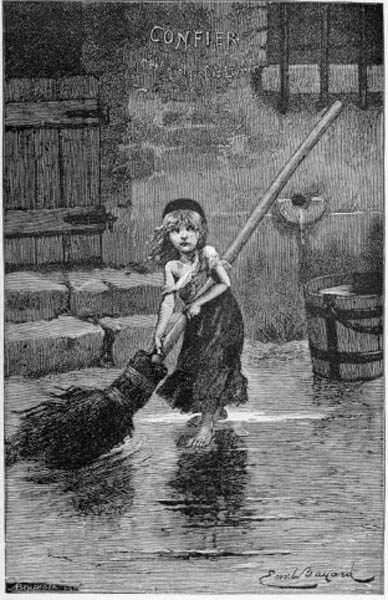Little Cosette with her oversized broom is possibly one of the most recognized illustrations of a girl today. Her face evokes tears from those familiar with the Les Miserables musical and possibly those familiar with the book cover. In the mid-19th-century novel by Victor Hugo, Cosette is one of many characters in this epic story of the struggles of the French populace during one of the many upheavals of the mid 1800s. While she is not the lead, she is the catalyst‚ often at her own expense‚ for almost every action by those she comes in contact with and who are a part of her life.
Little is known of Cosette’s background. Her mother, Fantine, left her with horrible foster parents, the Thanardiers, in order to make a living in the city. She sends meager amounts of money to pay for the child, which is rarely spent on her needs. The father is supposedly a rich student who had abandoned both mother and child. Cosette is beaten, starved, and made to perform heavy labor by her foster family, which is shown in this illustration. Likely around five years old in this illustration, Cosette sweeping the floors is a symbol of the downtrodden and an exploited child of poverty.
Câmile Bayard was the illustrator of this first edition of Les Miserables and created what is likely to be one of the most recognizable drawn girls of the 19th century. Les Miserables was intended as a political critique, but also to encourage compassion and hope in the face of adversity and injustice. This abused girl is a political statement, the poster child for continued revolution, with her sweet, lost, delicate, and frightened face superbly capturing the lives of thousands. Cosette herself is often critiqued as being passive and more of an object, a victim of her circumstance to be protected or as a beautiful innocent to be adored. Regardless, she is pivotal to the progress of the novel and in capturing the hearts of readers.

